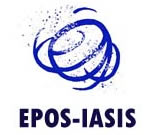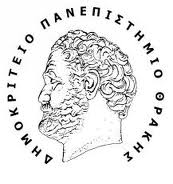Multipotent Theranostic Metal-Based Scaffold for Molecular Targeting of Colorectal Cancer

This project brings together expertise in medical optics and optoelectronics, magnetics, coordinate Lanthanide chemistry, bio-organic synthesis and molecular oncology, aiming at introducing a break-through solution for the overall management of colorectal cancer and potentially other malignancies expressing the epidermal growth factor family of receptors (EGFR) with prototype metal-based functionalized compounds engaging cutting-edge synthetic and complexation approaches.
Project Summary
This project brings together expertise in medical optics and optoelectronics, magnetics, coordinate Lanthanide chemistry, bio-organic synthesis and molecular oncology, aiming at introducing a break-through solution for the overall management of colorectal cancer and potentially other malignancies expressing the epidermal growth factor family of receptors (EGFR) with prototype metal-based functionalized compounds engaging cutting-edge synthetic and complexation approaches.
Initially, a panel of kinetically stable prototype lanthanides complexes with potent (a) optical (e.g near infrared spectroscopic) and (b) magnetic /relaxation properties will be designed and synthesized as building blocks for heterometallic arrays and subsequently the lanthanide complexes will be functionalized to a series of biologically active bimodal theranostic agents with anti-EGFR recognizing and inhibiting properties. This will couple the high resolution of magnetization with the high sensitivity of optical imaging. Ruthenium bis bipyridine complex will be formed, as an Near Infra Red-emitting building block and Lanthanide (i.e. Gd) chelate, as the MRIbuilding block.
Functionalization of the probes with the recognizing and therapeutic ligands (i.e. anilinoquinazolines) will increase the molecular size, thus optimizing proton relaxivity and magnetic efficacy. Different substituents will be attached to the ligand structure in order to shift optical excitation wavelengths towards higher values, a major requirement for in vivo applications. Molecular, structural, optical and magnetic characteristics will be determined by 1D and 2D NMR, electrospray mass spectroscopy, time-resolved, steady state spectroscopic fluorimetry, and vibrational sample magnetometry.
Diagnostic specificity will be assessed by ERB-B1 recognition and internalization of the compounds on (a) cell monolayers and (b) 3-dimensional tissue phantoms of cell lines differentially expressing ERB-B1 under inverted NIR microscope. Their biocompatibility will be evaluated by viability in normal colon epithelial cells and dispersity at high salt concentrations and in vitro therapeutic efficacy will be assessed by cell growth inhibiting and apoptotic properties in EGFR+ve and EGFR-ve cell lines with differential K-Ras mutation expression, employing colorimetric, cell imaging and enzymatic techniques. Drug-receptor interaction and downstream expression, distribution and activity of intracellular targets and critical signaling pathways will be evaluated in living cells and in real time with Bioluminescence Resonance Energy Transfer (BRET) assays defining biomarkers of efficacy downstream EGFR.
Highly sensitive and efficacious compounds will be considered for further development as theranostic agents for early detection and therapy of CRC in subsequent pre-clinical models with the application of multimodal Molecular Imaging. This approach will enable the quantitative imaging of defined cancer biomarkers in a non-invasive manner, aiding in lesion detection, patient stratification, new drug development and validation, dose optimization and treatment monitoring.
Partners
The consortium includes 4 collaborating organizations. The host organization (HO) of the project is the University of Cyprus (UCY) through the Department of Electrical and Computer Engineering (ECE). The partners are EPOS-Iasis, Research & development, ltd, Democritus Univeristy of Thrace (DUTh) and Colloides et Sciences Analytiques (PECSA), Universite Pierre et Marie Curie (UPMC).

The University of Cyprus (UCY) is a rapidly growing university that admitted its first students in 1992. Its School of Engineering was established in 2000 and admitted its first students in September 2003. UCY today has around 3,600 undergraduate and 1,100 graduate students, and 850 faculty and staff. It aspires to promote scholarship and education standards of excellence through teaching and research. In 2001, an independent evaluation by the European University Association (EUA) found UCY a “vital and still very young university of good European standard, with high potential for development.” Some supportive quality indices include (a) A high selectivity in undergraduate admissions (1 out of 10 applications), (b) Successful competitive research funding (2:1 ratio over state investment) that has reached the € 16.1 million in 2010, (c) Significant scholarly production of 3.53 peer-reviewed publications per faculty/year (for 2002-2004) well above average of Mediterranean universities. The host Dept. of Electrical and Computer Engineering has received € 10.2 million in research funding and its faculty has published an average of 5.5 peerreviewed publications per faculty/ year (for 2007-2009). The proposed research will be performed in the laboratories of the University of Cyprus. The Biomedical Imaging and Applied Optics (BIAO) Laboratory is a fully equipped medical optics facility. It is well suited for optic and fiber-optic experiments with optical and electronics infrastructure and a variety of microscopy solutions. The equipment in the Laboratory included optical tables, laser sources, fiberoptic interferometers, high precision opto-mechanical components and state-of-the-art testing and acquisition electronics. The Laboratory also maintains an experimental OCT system for the development of new technology and algorithms.

EPOS-Iasis Research and Development, Ltd.
EPOS-Iaisis, R&D Ltd, is a biotechnology SME with research orientation in harnessing molecules and light for faster diagnosis and better prognosis with application of cutting edge functional proteomics and interactomic techniques and validation of therapeutic biomarkers. EPOS-Iasis R&D is engaged in the design, validation and development of novel targeted non-peptidic systems for molecular optical theranaustics of a diverse field of inflammatory and malignant conditions. The company’s leading product line focuses on novel systems for molecular endoscopy. EPOS-Iasis is a biotechnology spin-off which has brought together experts in Molecular Oncology, Optics and Nanobiotechnology and within the first 3 years of its life has already been the recipient of 5 National and 1 EC competitive research grants (514460 €), in close collaboration with the Cyprus academic and medical community. EPOS has attracted to its human critical mass renown scholars of the Academic community

Democritus University of Thrace
Dr. Agianian’s group is focusing on the study of structure-function relations in biomolecular systems using a battery of biophysical techniques and X-ray crystallography. The group has extensive expertise in the biophysical and computational analysis of protein-ligand interactions, with current emphasis in the design of anti-cancer drugs. The group enjoys spacious laboratories which can accommodate seconded staff. It is currently comprised of two PhD students, one MSc graduate and four diploma undergraduates.

Colloides et Sciences Analytiques (PECSA),Universite Pierre et Marie Curie
The PECSA laboratory s a multidisciplinary laboratory divided in teams whom research is dealing with different area: Physico-Chemical Properties of Electrolytes, Divided Material and Colloids and Analytical Sciences. The team “Inorganic Colloids” directed by Prof. Valerie Cabuil, funded by Prof Rene Massart, is working since more than 30 years in the field of inorganic colloids. Chemists and physicians from this team are specialized in the synthesis and characterization of nanoparticles, especially magnetic ones. The laboratory belongs to Universite Pierre et Marie Curie, the leading french scientific and medical university, with its 120 research laboratories and its 3500 doctoral students..